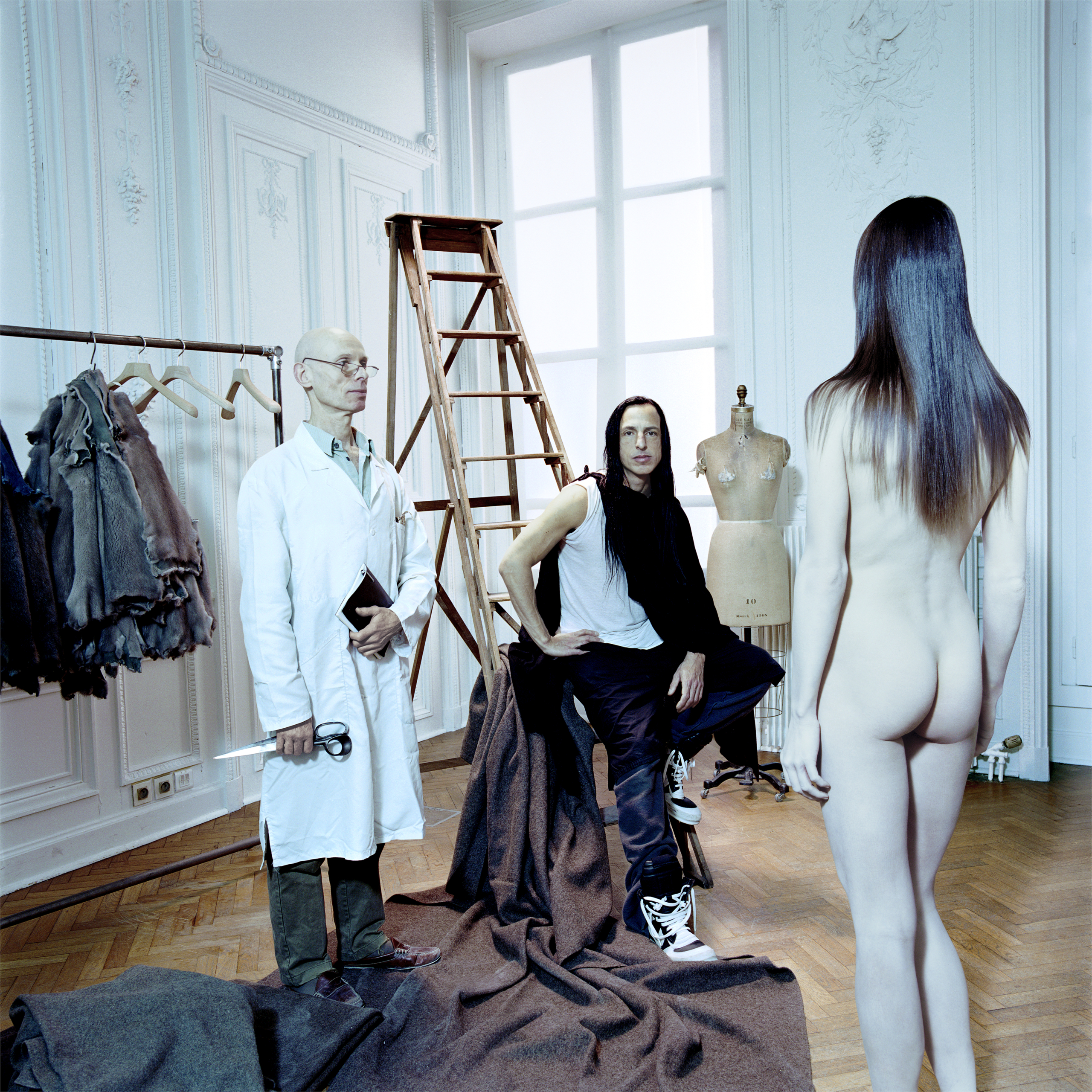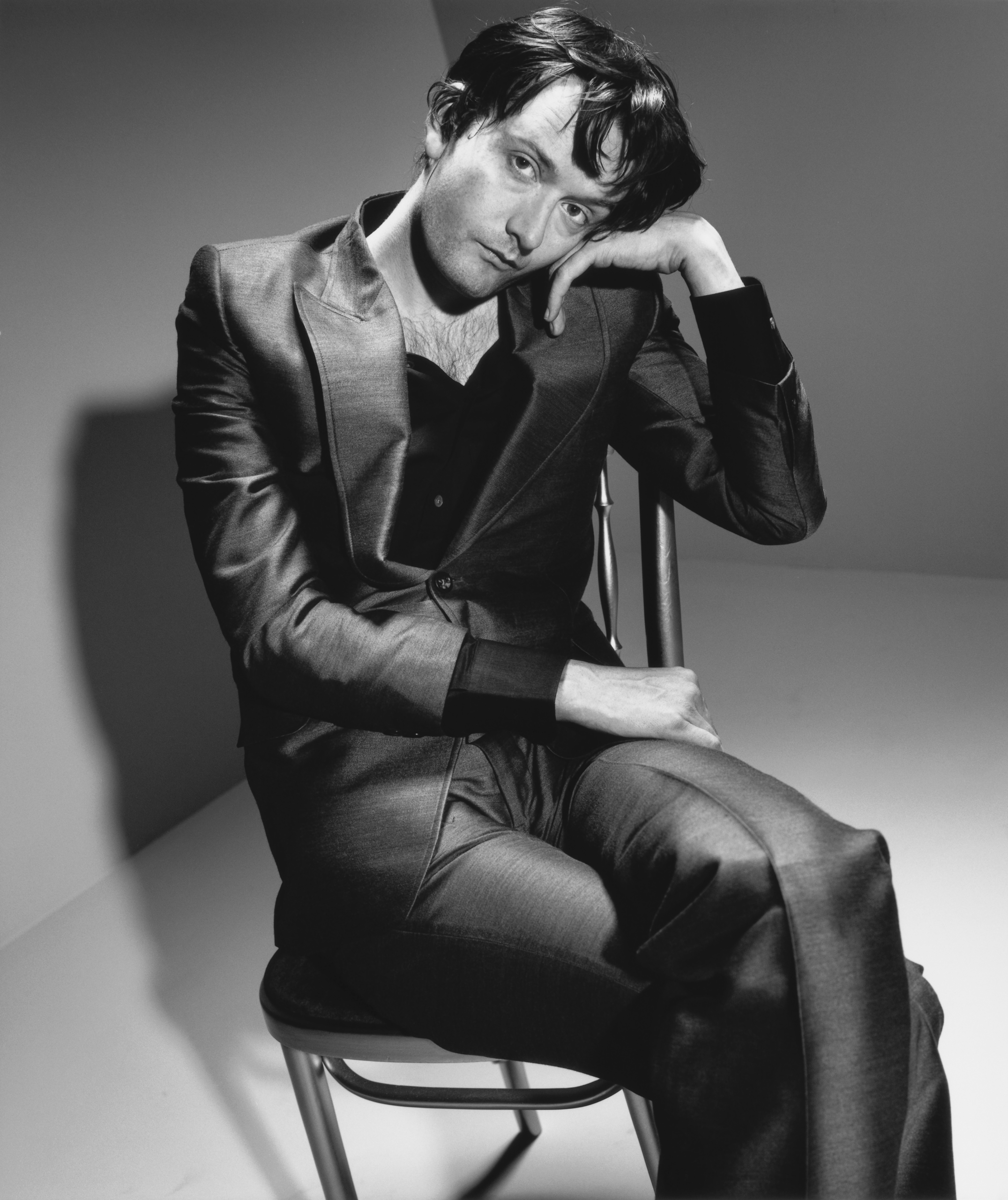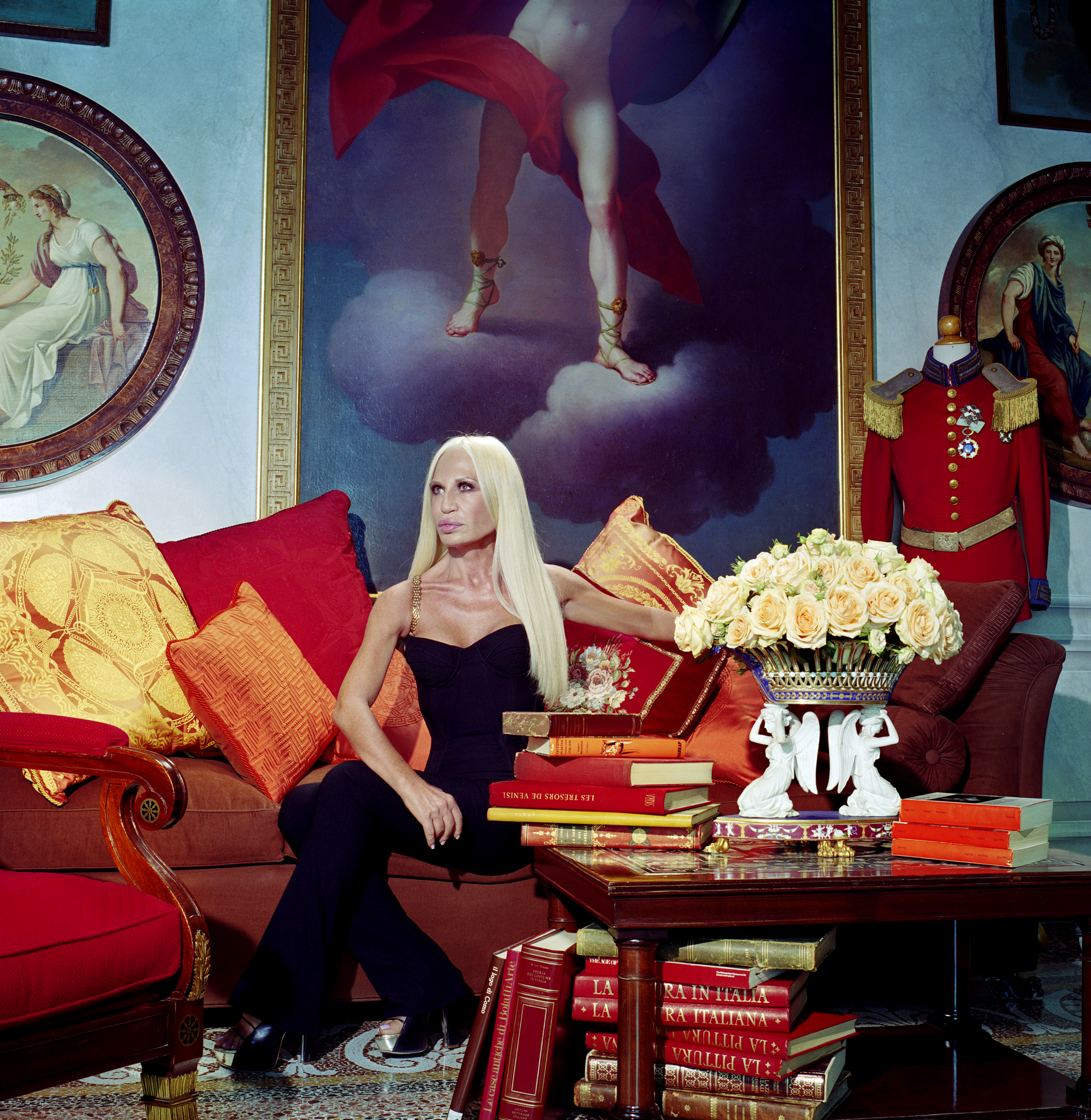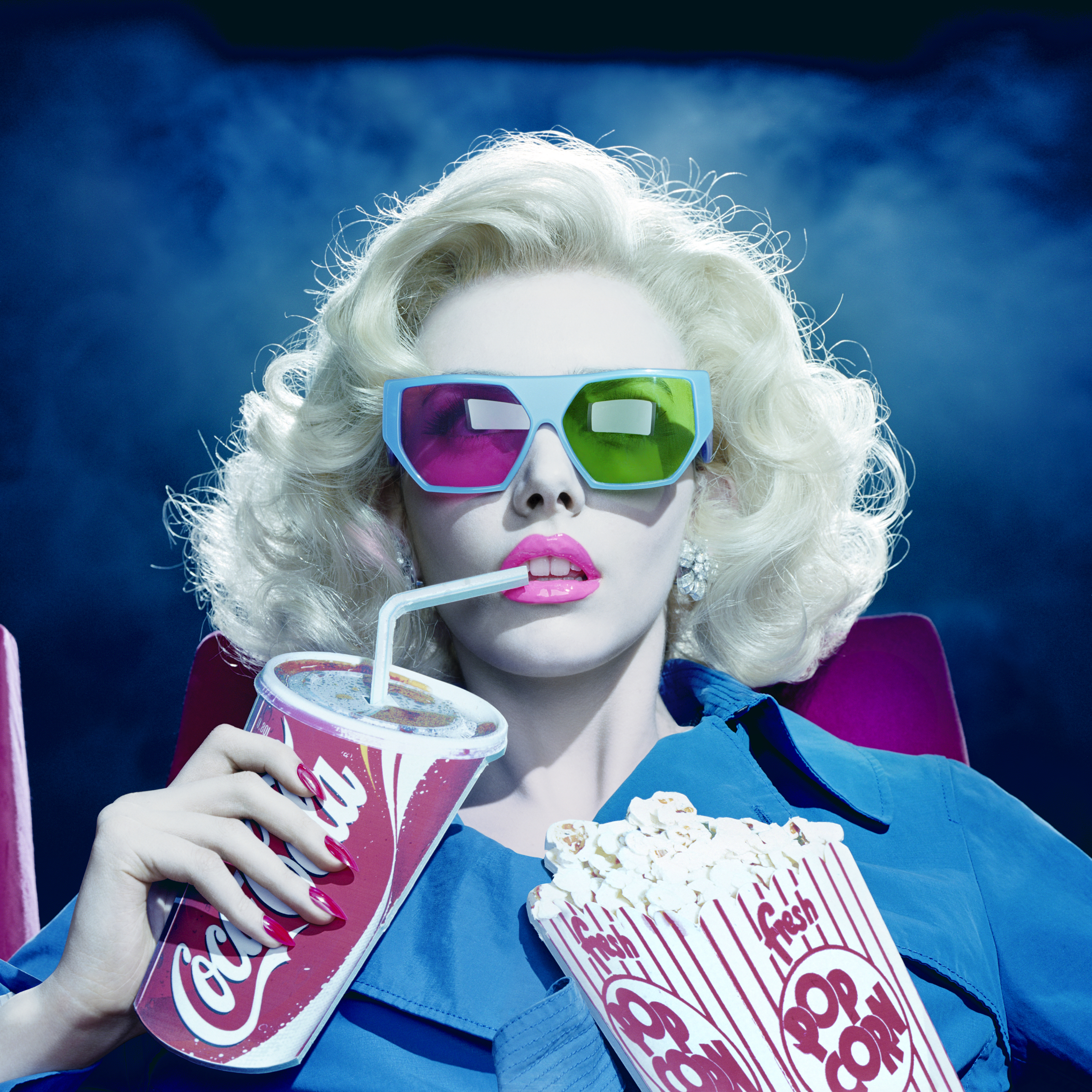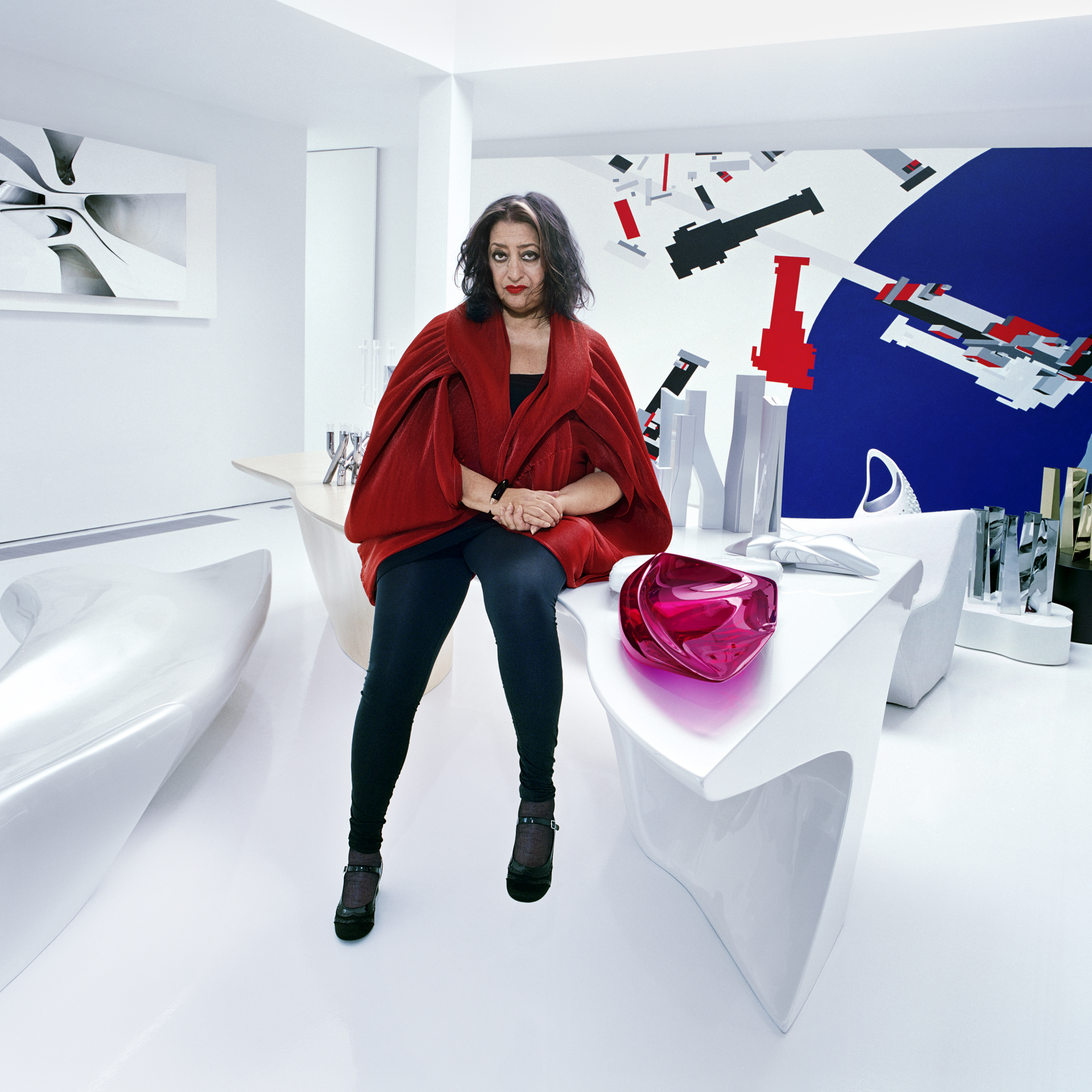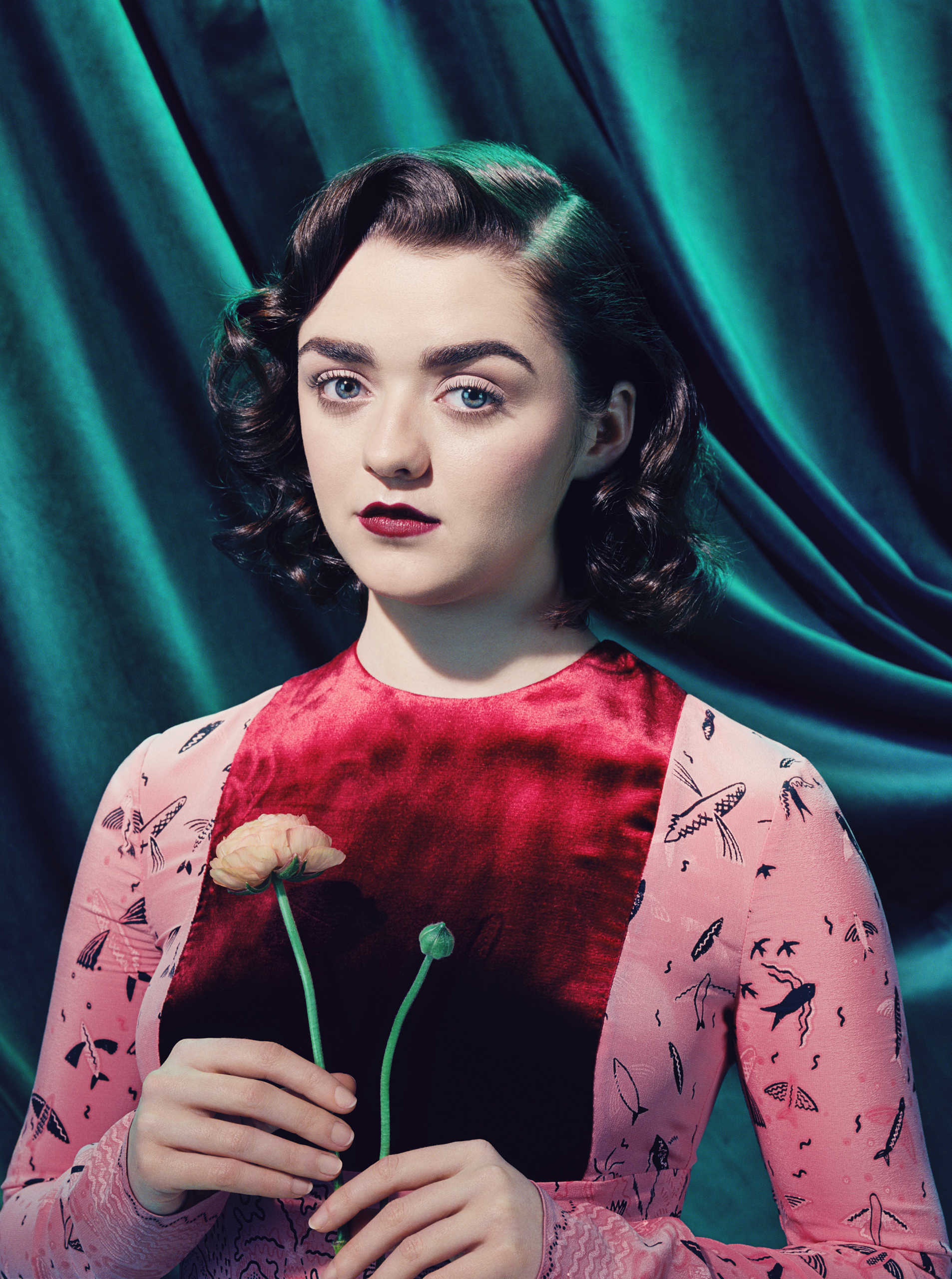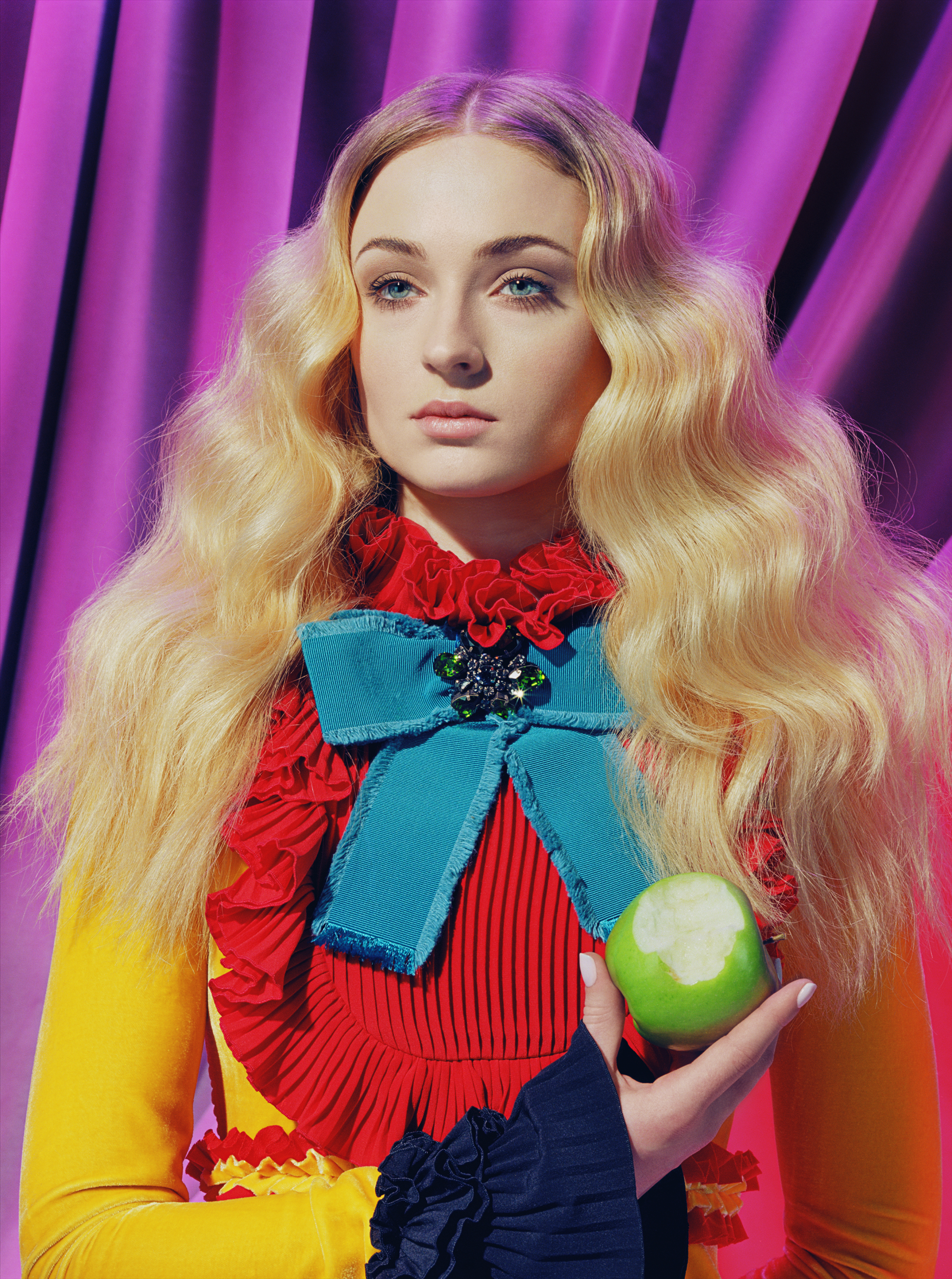1999 to 2020
Miles Aldridge Shares the Memories Behind Some of His Iconic Photos
The photographer Miles Aldridge dreamt of one day becoming a film director. Now at 55-years-old, as he tells me over the phone from London, he feels like he’s taken “a bunch of photographs” that may as well be scenes from a major Hollywood project. But as Aldridge reminds me, “Life is what happens while you’re making plans.” And what a life the photographer has had. He’s spent decades creating and capturing bold images that are not only inspired by art but speak directly to the tensions of the times. Throughout his career—from working under Franca Sozzani for Vogue Italia to shooting for this very magazine in 1999, and the countless collaborations with fellow contemporaries like Maurizio Cattelan and Harland Miller—Aldridge has built a surreal world filled with excitement, heroines, and glamour. Now, as part of his first retrospective since 2013 in London, he is taking a look back at his astounding oeuvre in Virgin Mary. Supermarkets. Popcorn. Photographs 1999 to 2020 at Fotografiska Stockholm (running through February 2021). The exhibit shows more than 80 of his photographs from 1999 to today, as the name suggests. Below, the photographer speaks with Interview about some of the images from his latest retrospective, including a photo of Donatella Versace, two regal shots of Game of Thrones stars Maisie Williams and Sophie Turner, and a rare black and white photo he shot for us in 1999.
———
Virgin Mary’s Supermarket Popcorn
“The title of the exhibition refers really to three iconic works of mine: Immaculate, which was a series of Virgin Marys I created. Supermarkets refers to another series of rather kind of Stepford Wives-esque women cruising a supermarket with these long aisles of almost the church to consumerism. Then, Popcorn relates to another iconic image of mine, which is called ‘3D,’ in which a woman is watching a 3D film wearing 3D glasses, but she is drinking two-dimensional Coca-Cola and eating two-dimensional popcorn.”
“I think what’s interesting about my work is that, apart from one picture, which is a picture of Jarvis Cocker in black and white, interestingly shot for Interview around about 1999, everything else really feels like one world. This world was shot over a period of 20 years. I think what people will notice in this show is that all the work really feels like one gigantic movie, all made at the same time. Everything fits together.”
———
Donatella Versace, 2007
“This was a portrait for the New Yorker. I was flown over to Lake Como, where her house is, and it was really fascinating. People use Versace as a kind of adjective now, but these people really exist. She exists in a Versace way. It was incredibly glamorous, and everything seemed to be gilded, baroque, and rich fabrics. The house itself was stunning. It spilled out into Lake Como itself. Donatella, she was great. There was a sense of Gianni Versace’s absence in the space. I was shown into his study, and it was just like Aladdin’s cave, an incredible mixture of roman sculptures and Catholic imagery. On the table, he had these two Roman wrestlers, life-size sculptures. I just couldn’t imagine sitting there, these huge men wrestling above you while you were drawing your designs for the next season. In a way, the absence of Gianni was very potent to me as a memory of being here with Donatella. It was one of the great memories of my career, really, being shown into a room of a man who no longer exists.
We finished the shoot and my assistant and I went for a swim in Lake Como, which was quite Bruce Weberish to do that. Then, we dried off and we headed to the Milan Airport. I had 20 rolls of film in a bag, and I remember giving it to security, the guys that do the X-ray. I always say, “Look, do you mind not X-raying this film because it might damage the film?” And, mostly, nine times out of 10, they say,”Yeah, sure let me just check it.” The guy was kind of a jerk, and I said, “Listen, this is photographs of Donatella Versace,” and he looked at me like, “You think I give a fuck about Donatella Versace?'”
———
POPCORN
“The film that really blew my mind as a young man was called A Matter of Life and Death by the filmmakers Powell and Pressburger, in which a man falls in love with a woman and then dies, but is not collected by the angels to go up to heaven in time, and so he protests his case in a gigantic courtroom in heaven. That’s the basic story. What really blew my mind was the use of color in this film. Heaven is portrayed in black and white, but the rest of the film, everything that happens on earth, is in this searing technicolor. Entertainment, whether it be cinema or photography, should be slightly from another kind of world.
These kinds of things started to really awaken my childhood imagination. You have to remember that when I was watching television as a young man in the 1970s, it was incredibly boring. Most TV was brain-numbingly boring. Then, of course, there was religion. On a Sunday, you couldn’t find anything to watch on television. We looked at America with deep longing like there might be incredible things on TV. We got some American shows like Kojak and Happy Days, and it always seemed like an amazing country through its television.”
———
Zaha Hadid, 2009
“This was a commission from the New Yorker. It was photographed in her apartment. It’s so futuristic. I don’t like surprises, I always go and see the location before if I can. The apartment’s in London, so I visited before and I was really taken by this almost Stanley Kubrick 2001 Space Odyssey that she was living in. It was quite a conventional flat, the exterior. But, when you went inside, it was this space-age, white-on-white. I had this idea that she would almost be floating in this space. In a way, the distance between her and the camera, there’s an incredible tension there because her presence and her stare is filling the space between us.
———
Maisie Williams and Sophie Turner, 2017
“This was an assignment for Time magazine. They wanted to do a series on the actors and actresses of Game of Thrones, and so I was flown to Los Angeles to photograph Maisie Williams and Sophie Turner. I was really sure I wanted the portraits to have what I would describe as a kind of nod to the painters of the Northern Renaissance, like Albrecht Dürer and Lucas Cranach. I’d flown to Los Angeles with these two books on Albrecht Dürer and Lucas Cranach. I turn up in Los Angeles, and one of my favorite museums in the world is the L.A. County Museum. So, I get an Uber over there from the Chateau Marmont and go in. This is when you feel sometimes that things are being organized for you like someone’s leading you. The exhibition when I arrived was Albrecht Dürer and Lucas Cranach.”
“The next morning, I rucked up at the studio. It had been the Screen Actors Guild Awards the night before, and, by their own admission—I don’t think they would mind me saying this—but Maisie and Sophie had drunk a hell of a lot. So, they were, again, by their own admission, pretty hungover and pretty green at the gills. So, I think they were probably hoping to get through this pretty fast, but they were real troopers. Instead of being what they really were, which was hungover and feeling like shit, they performed these inner queens and princesses of my imagination. Sophie Turner said something to me, which I thought was like, ‘Gosh, I wonder what that really means.’ Sophie said to me, ‘You know, if I was a man, I would like to be you,’ and I thought, ‘Wow, that’s a great compliment, I think.'”

